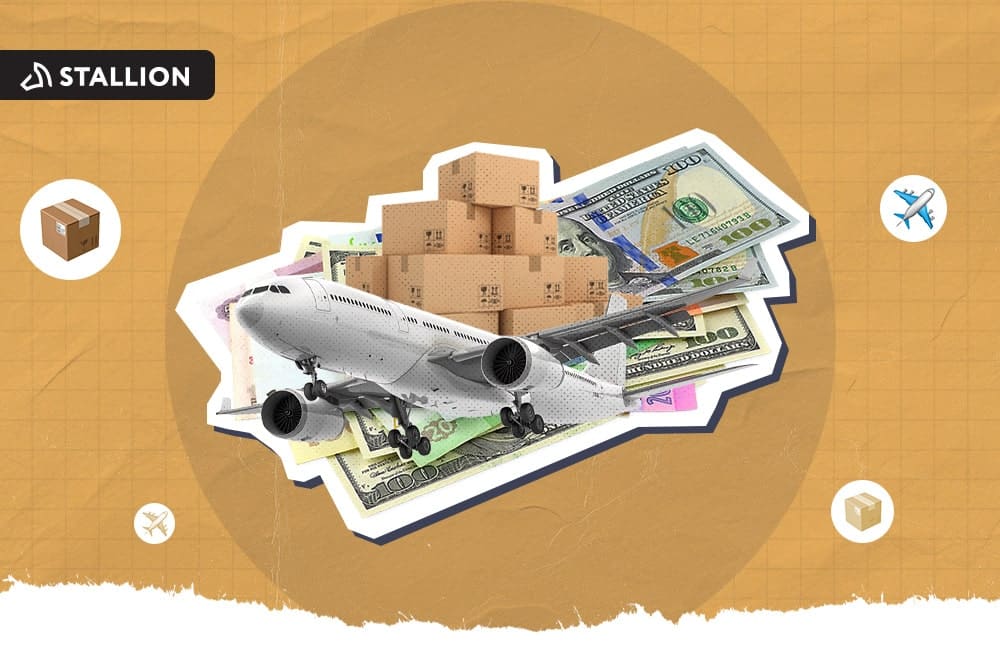
Over the years, Canada has maintained its spot as one of the US’ top 3 trading partners. After all, the country is much closer in proximity to American borders, and, through bilateral agreements, economic relations between the US and Canada continue to flourish. This robust trading relationship between the two countries has made it easier to ship goods across their respective borders. As a result, a lot of businesses try to maximize their customer reach by utilizing cross-border shipments.
Canada cross-border shipments are indeed beneficial to reinforce a sustainable supply chain. Still, finding the cheapest shipping prices Canada has to offer can be a tricky game to play. Most entrepreneurs fail to strategize their shipping processes efficiently, and as a result, their Canada shipping packages end up being too expensive to deliver.
If you have a business, your Google search engine could have questions like, “How much is shipping Canada to US” or “How long does Canada standard shipping take?” This article answers all those questions and provides additional tips on how you can maximize your value for money. Equipped with this information, you will be able to make better decisions and formulate a more efficient shipping strategy.
To be able to ship products to Canada, the first step is to ascertain which products you can and cannot deliver to the country. After all, Canada has imposed certain restrictions to protect its security and economic interests. If you’re a business, it’s your responsibility to familiarize yourself with these rules before even attempting to ship a single parcel to Canada.
Under Canadian law, below are some items that you cannot ship to Canada:
Some shipping companies already discard forbidden items from products before having them delivered, and this is great. However, other courier drivers never look at the contents of your shipment boxes and only rely on the information that you stamped outside your goods. Suppose they do end up in Canadian territory, your products could get caught by customs officers. In that case, they can either confiscate the restricted items from your parcels, ship them back to you, or even call the authorities.
There’s nothing more beneficial for small businesses shipping to Canada. However, you must keep yourself informed to avoid further customs headaches in the future.
You now know the products you can and cannot ship to Canadian borders, but is there a way to find the cheapest shipping rates in Canada? Short answer, yes (but it’s not as simple as you think.) You need to utilize a systematic approach, which mostly relies on your perception and quick decision-making skills, to be able to maximize your shipping process.
There may not be a fixed algorithm to determine the cheapest shipping rates, but there are undoubtedly several factors that may help lessen your long-term costs. Below are some tips to help you get started right away:
If there’s a reason why standard shipping from outside Canada can be expensive, all goods shipped to the country are accompanied by hefty taxes, duties, and even additional handling fees from shipping companies. Any smart business would prefer planning and pay for these extra costs ahead of time, and so you should do the same.
The Canadian tax system is mostly described as low de minimis— a threshold for sellers to pay a fee for the combined value of goods and their taxes/duties. In tariff lingo, Canada’s cross-border shipment tax system is otherwise known as a low DMT Regulatory Framework.
Small businesses, express courier service companies, and consumers prefer a higher DMT for numerous reasons, but Canada continues to employ a low DMT system to benefit domestic retail companies. This framework means that for every product valued over C$20, you will have to pay a certain amount for customs duties or import taxes. Coupled with additional handling fees, there’s no surprise that some small businesses find US-Canada shipping a bit expensive.
Therefore, take the time to familiarize yourself with your Harmonized Tariff Schedule Code (HTSUS) to connect your products to Canadian customs and calculate precisely how much you will have to pay ahead of time.
In the shipping industry, size and weight are crucial factors to help you determine your final costs. These two metrics are always taken into consideration by shipping companies before giving out their final cost breakdown, so you must know them ahead of time.
For companies with a fixed inventory, determining your costs through your products’ size and weight is much more comfortable. Simply look for the cheapest shipping company that accepts your package dimensions, and you’re done. On the other hand, companies with flexible inventories are better off using shipping calculators for each shipment that they will make. If they can accurately take down their shipment’s size and weight, they will get a ballpark figure of their shipping costs. Another excellent solution for varied inventories would be to divide your products into separate categories and find the cheapest shipping rates.
Packaging also comes into the equation when calculating size and weight, so it’s essential to keep your packages as firm, lightweight, and compact as possible.
Shipping in Canada can be difficult and expensive, no doubt about it. As the second-largest country in the world, Canada’s 9.1 million square kilometer-landmass makes navigation much more complicated for all businesses.
You should know that Canadians live far away from each other, so it is essential to calculate your exact shipping distance every time you have products delivered. Within Canada’s major urban cities (Toronto, Montreal, Vancouver, and Ottawa), shipments can be delivered in as fast as four days. However, reaching certain rural areas can be challenging and can result in inflated shipping costs.
It’s essential to gather data on your regular shipping distance and analyze if there are location patterns that you can take advantage of. As soon as you have enough data to study, you may consider using specialized fulfillment warehouses nearest to the majority of your customers and reducing overall shipping costs.
When used correctly, fulfillment warehouses help you ease your headaches and even help you save money on shipping costs in the future.
While there is no magic recipe to get the cheapest shipping prices in Canada, a smart business will most certainly find ways to minimize shipping costs. It will take time and effort, but a clear shipping strategy always pays off.
It’s always a good idea to continuously inform yourself of the US-Canada shipping industry. If you read up on the nuances of Canadian shipping taxes, take note of your shipments’ product size and weight requirements, and calculate shipping distances, you will eventually be able to formulate a shipping plan suitable for your business.
However, if you prefer a team of shipping professionals to handle your shipments, we at Stallion Express can provide the easiest shipping integration process in Canada. Book your appointment today!
Aman looks after the content marketing department at Stallion Express. He is passionate about helping businesses grow by providing informative and up-to-date trends in the eCommerce industry. Outside the office, you can find him on the soccer field cheering on Real Madrid.



Can our fellow Torontonians relate?
-
#smallbusiness #business #entrepreneur #socialmedia #shipping #ecommerce #canadianecommerce #shopify #poshmark #b2b #saas #etsy #ebay #canada #canadiansmallbusiness #shoplocalcanada #entrepreneur
#toronto

Here’s your quick hassle free shipping from 🇨🇦 to 🇺🇸 as a business owner!
-
Any questions?! Leave them 👇🏻 and save this video so you don’t forget!
-
#smallbusiness #business #entrepreneur #socialmedia #shipping #ecommerce #canadianecommerce #shopify #poshmark #b2b #saas #etsy #ebay #canada #canadiansmallbusiness #shoplocalcanada #entrepreneur

Meet @drinkbenny a 🇨🇦 female founded energy drink brand! Instead of focusing on their products, they’re taking a unique approach by hosting in person events in different Canadian cities to offer an experience for their community 🧡
-
What are your thoughts on in person events? 💭
-
#smallbusiness #business #entrepreneur #socialmedia #shipping #ecommerce #canadianecommerce #shopify #poshmark #b2b #saas #etsy #ebay #canada #canadiansmallbusiness #shoplocalcanada #entrepreneur

Do you know the difference between DDU and DDP when shipping internationally 🌏 ?
-
Questions? Leave them below! 👇🏻
-
#smallbusiness #business #entrepreneur #socialmedia #shipping #ecommerce #canadianecommerce #shopify #poshmark #b2b #saas #etsy #ebay #canada #canadiansmallbusiness #shoplocalcanada #entrepreneur

Here’s a quick hack to save time from choosing multiple postage options
↪️ Turn on the lowest postage rate automation to save you time!
-
Questions? Leave them below! 👇🏻
-
#smallbusiness #business #entrepreneur #socialmedia #shipping #ecommerce #canadianecommerce #shopify #poshmark #b2b #saas #etsy #ebay #canada #canadiansmallbusiness #shoplocalcanada #entrepreneur
